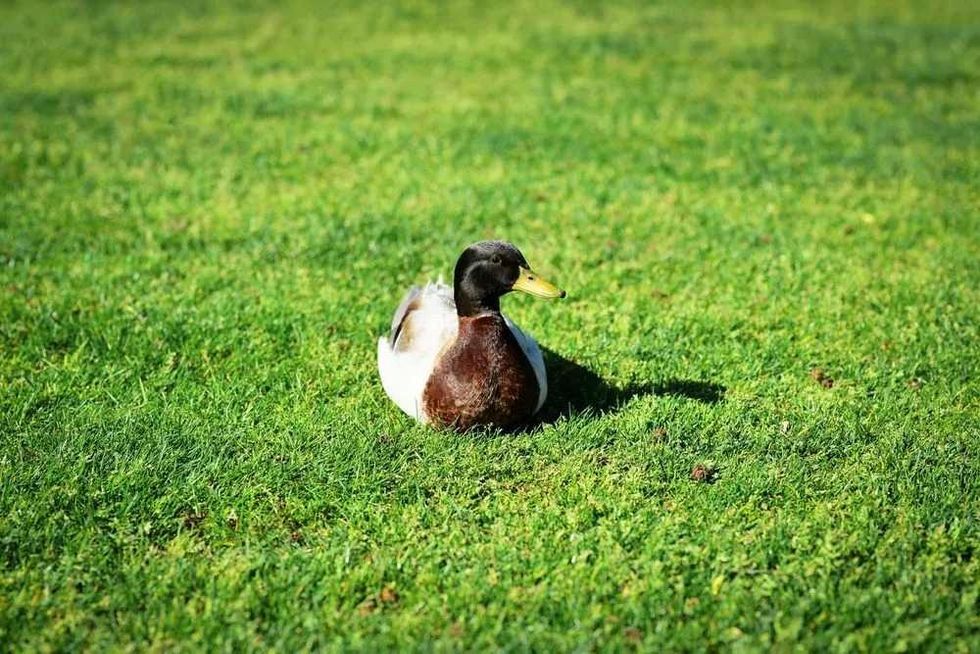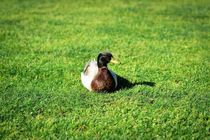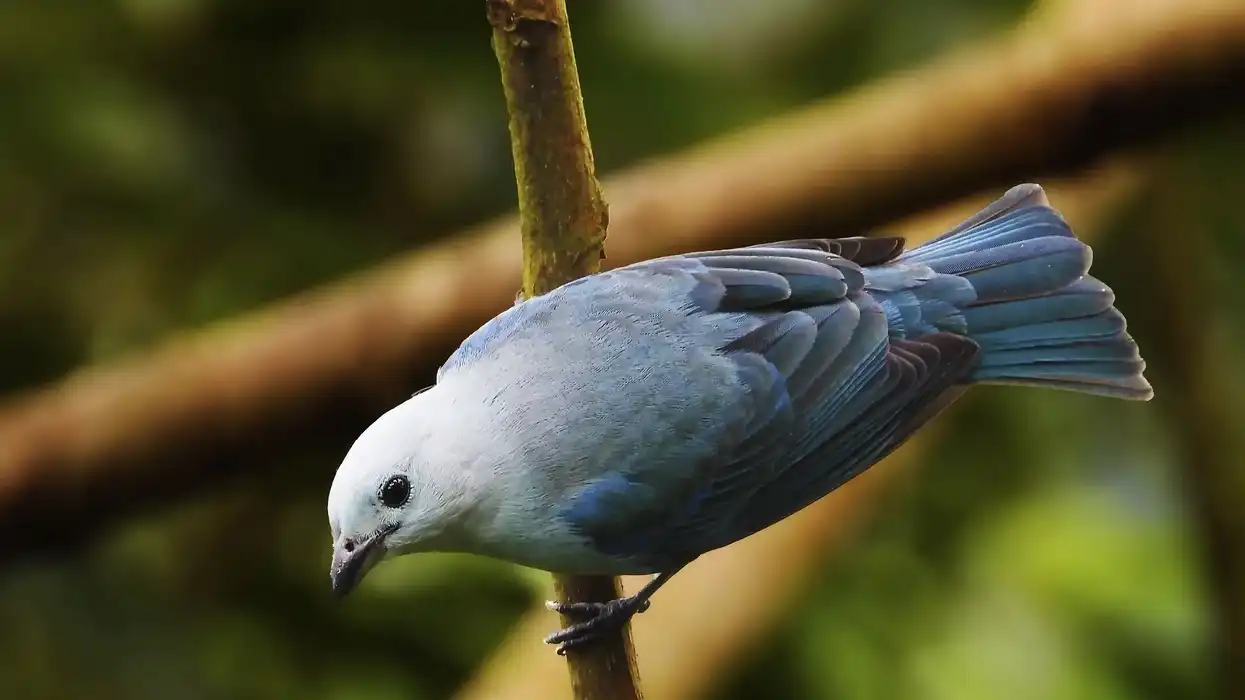The blue Swedish duck is a domestic breed and that is very calm and gentle. Hence, they make great pets.
This duck breed is a popular choice in poultry farming. Apart from being reared for egg and meat production, they are also used for ornamental and exhibition purposes. They have a bluish slate head and a white bib.
These features set them apart from other ducks. A large number of these birds were initially available in Pomerania.
Their availability has decreased in recent years due to poultry farming. These ducks produce a large number of eggs, ranging between 100 and 150.
The meat of this bird is considered to be very tasty and is widely sought after. The probability of producing a slate blue duckling is low as they do not breed true. For this reason, blue ducks are not popular among breeders.
Other names for it include Swedish blue, Crested Blue Swedish Duck, and Svensk bla anlea (Swedish). To get more blue Swedish duck info, keep reading and do check out our other articles on ring necked duck and hooded merganser.
Blue Swedish Duck Interesting Facts
What type of animal is a blue Swedish duck?
The Swedish blue duck is a domestic duck breed that belongs to the Anas genus.
What class of animal does a blue Swedish duck belong to?
The Swedish blue duck is a type of bird that is a member of the Aves class of the Animalia kingdom.
How many blue Swedish ducks are there in the world?
The population of Swedish blue ducks in the United States is less than 2500 individuals. According to the American Livestock Breeds Conservancy in North America, the population of Swedish ducks consisted of only 1823 breeding ducks. Throughout the world, the population of this breed is less than 5000.
Where does a blue Swedish duck live?
It occupies the wetlands and marshes of North Germany and northwest Poland. The availability of Swedish blue ducks was common in Pomerania in 1835.
What is a blue Swedish duck's habitat?
Swedish blue ducks mainly inhabit places with thick vegetation and small water sources like ponds and small streams. They also live on poultry farms.
Who do blue Swedish ducks live with?
The Swedish blue duck lives together as a group or in pairs. Ducks, in general, are social birds. They are reared in couples or as a small group since they get lonely quite easily. They can also become stressed and depressed when left alone.
How long does a blue Swedish duck live?
The Swedish blue duck generally lives for eight to nine years. But with proper care, this duck breed can live up to twelve years.
How do they reproduce?
They are oviparous and reproduce by laying eggs. The breeding season is between March and July. The blue Swedish duck can lay 100-150 eggs per year. The number of eggs can vary based on the individual.
The eggs are white, blue, or green. The egg can weigh between 2.9-3 oz (85-90 g). The duckling reached sexual maturity in 25-30 weeks.
What is their conservation status?
According to the Food and Agriculture Organization of the United Nations (FAO), this breed is placed in the Critical category. The American Livestock Breeds Conservancy has classified the Swedish blue duck on the watch list. Their population is on the verge of extinction as they are reared on poultry farms for their meat and eggs.
Blue Swedish Duck Fun Facts
What do blue Swedish ducks look like?
Swedish blue ducks are medium-sized birds that have dark blue oval heads. They have a white bib. The overall body color is slate blue.
This breed has brown eyes and white neck feathers on the front part. They have webbed reddish brown feet. Male ducks have green and white bills while the female ducks have slate blue bills. The Swedish blue duck does not breed true.
The wings have a green sheen. The chance of getting a blue Swedish duck when two blue Swedish ducks mate is 50%. It gives 25% of black Swedish ducks and 25 percent of splashed white Swedish ducks.
How cute are they?
The brown eyes and overall slate blue color is considered extremely attractive. For this reason, they are used for ornamental purposes. The blue Swedish duck baby is adorable and calm.
How do they communicate?
These birds communicate by making oink or quack-like noises. Contrary to other ducks, females make high pitched noises while the males produce low pitched noises. When males spot rivals, they make continuous quacks. When hungry, the blue Swedish ducklings make whimpering noises.
How big is a blue Swedish duck?
It is a medium sized bird. The blue Swedish duck size is comparable to the Rouen duck. The exact height and length are not known.
How fast can a blue Swedish duck move?
The Swedish blue duck can fly, but very rarely does. The blue Swedish duck wings and body structure are not built to make power flights or travel long distances. They can stay afloat in water and swim quickly.
The large webbed feet help them push water easily. They have air sacs in their bodies which help them to keep floating. They are not very fast on land and can move at a moderate speed.
How much does a blue Swedish duck weigh?
Males are slightly bigger than females. The drake weighs around 6.6-8.8 lbs (3-4 kg) and the duck weighs 5.5-7.7 lbs (2.5-3.5 kg). It is two times heavier than a harlequin duck.
What are their male and female names of the species?
The male blue Swedish duck is called a drake, and the female blue Swedish duck is called a duck or hen. When they are together as a group, the group is called a gaggle.
What would you call a baby blue Swedish duck?
The baby ducks can be called blue Swedish ducklings.
What do they eat?
They are omnivores that mainly feed on larvae and plant matter. Their diet also includes other aquatic animals like small fish, snails, and small crabs. They do eat pupae and seeds every now and then. Domestic ducks can consume pellets.
Their teeth have serrations. This physical adaptation allows them to sieve particles other than food in the water. It helps them to easily catch the target. They are hunted by red foxes, badgers, minks, owls, and hawks.
Are they dangerous?
The Swedish blue duck is a calm breed. They are social and very friendly with humans. They do not get angry unless threatened.
Just like all other goose breeds, they are very protective of their ducklings. If you are spotted anywhere near the blue Swedish ducklings, they might chase you or sometimes even bite you. This is huge trouble while separating them.
Would they make a good pet?
Having blue Swedish ducks as pets is no trouble. The calm and docile nature of this domestic breed makes them maintainable.
They are also social and can be very friendly. Initially, they might be hostile, but eventually, they turn out to be very friendly. They are not reared in breeding farms as they do not breed true and perfecting the slate blue color production is one of the toughest jobs.
Did you know...
For increased and perfect egg production, the breeders have to put in a lot of effort. As a result, egg production and availability are extremely low in June.
The Swedish duck wings are waterproof.
What color eggs do blue Swedish ducks lay?
Since they do not breed true, the color of blue Swedish duck eggs can vary. This domestic duck breed lays 100-150 eggs per year. The number of eggs can vary based on the individuals. The eggs are white. They can also lay green or blue tinted eggs.
How friendly are blue Swedish ducks?
When compared to other duck breeds, they are the most well mannered. They do not lash out or engage in disruptive conduct.
They are easily handled, even as a bunch. They are amiable and adore humans. If you raise them from a young age, they will even be at ease while you are mingling with the blue Swedish ducklings and will let you go close to the eggs.
Here at Kidadl, we have carefully created lots of interesting family friendly animal facts for everyone to discover! For more relatable content, check out these common merganser duck facts or muscovy duck facts pages.
You can even occupy yourself at home by coloring in one of our free printable Swedish blue duck coloring pages.
Main image by Antony-22.









